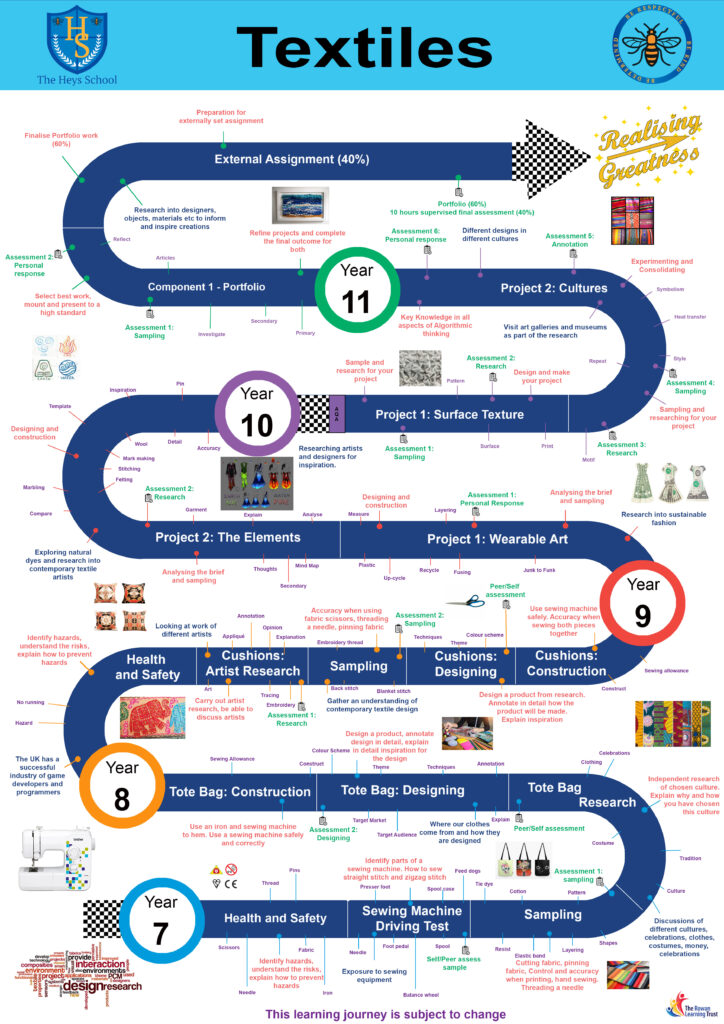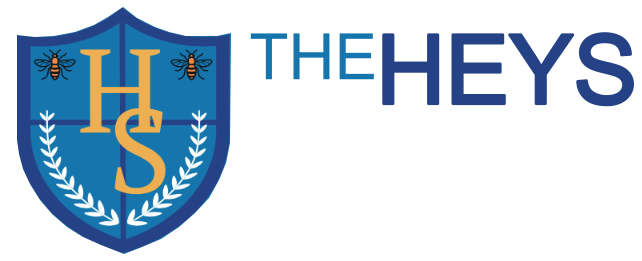
Year 7
Within Year 7 pupils are introduced to a range of fabrics and their properties, to enhance their subject knowledge. A variety of techniques are trialled and tested through sampling such as tie dying, block printing, weaving, applique, machine stitching and hand embroidery. These skills are then transferred to a levelled project in which pupils design and make a tote bag based on the theme Manchester. Research, designing, testing, making and evaluating are covered during the project. Pupils are expected to design a range of ideas based upon their research and testing to create a functional product.
Year 8
During Year 8 pupils extend their research and design skills by looking at the theme Pop Art and how it has inspired many designers in Textiles and product design. Pupils sample a wider range of techniques from mono printing, heat transfer printing, machine embroidery, and adding embellishments. A design and make task of creating a Pop Art cushion will be completed by all pupils. Mood boards, initial ideas, design ideas and final designs are created followed by a completed functional product which pupils can take home.
Year 9
During Key stage 4 pupils will study Art Textiles and will be introduced to surface texture, interior design and fashion. During Year 9, a design and make task of creating a textile ‘Food packet’ inspired by Holly Levell will be their first project before they take their options, followed by a project based on the theme ‘Nature’. This will able them to build up their confidence and skills in sewing, construction and sampling. Within Year 10, pupils will complete a portfolio of work worth 60% of their final mark built up from an introductory project and a development project. In year 11 pupils complete a sustained project in the first term and an Externally Set Assignment worth 40% of the final mark during the second term.
Textile design is defined here as the creation of designs and products for woven, knitted, stitched, printed or decorative textiles that might have a functional or non-functional purpose.
KEY stage 4: Art & Design-Textiles
Areas of study
In Component 1 and Component 2 students are required to work in one or more area(s) of textile design, such as those listed below:
- art textiles
- fashion design and illustration
- costume design
- constructed textiles
- printed and dyed textiles
- surface pattern
- stitched and/or embellished textiles
- soft furnishings and/or textiles for interiors
- digital textiles
- installed textiles.
They may explore overlapping areas and combinations of areas.
Knowledge and understanding
The way sources inspire the development of ideas, relevant to textile design including:
how sources relate to cultural, social, historical, contemporary, environmental and creative contexts which might be determined or influenced by functional or non-functional considerations
how ideas, feelings, forms, and purposes can generate responses that address personal needs or meet external requirements, such as client expectations and any associated constraints.
The ways in which meanings, ideas and intentions relevant to textile design can be communicated include the use of:
figurative and non-figurative representations, stylisation, simplification, surface embellishment, constructional considerations and imaginative interpretation
visual and tactile elements, such as:
- colour
- line
- form
- tone
- texture
- shape
- pattern
- composition
- decoration
- repetition
- scale
- structure
Skills
Within the context of textile design, students must demonstrate the ability to:
use textile design techniques and processes, appropriate to students’ personal intentions, for example:
- weaving
- felting
- stitching
- appliqué
- construction methods
- use media and materials, as appropriate to students’ personal intentions, for example:inks
- yarns
- threads
- fibres
- fabrics
- textile materials
- digital imagery.
